
Towering and majestic, the grand old trees that dot Colombo’s sidewalks are so much a part of the city’s identity that they are often overlooked by those who walk or drive past them every day. The number of trees has, over the years, dwindled, but those that remain stand witness to a period in which Colombo was hailed, by those all around the world, as ‘The Garden City of the East’.
According to environmental lawyer Jagath Gunawardena, who conducted a personal survey of Colombo’s trees in 1985, there is evidence that many of the trees that grace the city’s sidewalks are exotic trees, and the first of their species to be brought to Sri Lanka – then Ceylon – as part of the British regime’s plan for the city. There were, of course, native trees in the mix, such as the murutha, and the once abundant yellow cotton, but the larger number, Gunawardena tells us, were exotics, such as the jacaranda and the rain tree.

There’s a lot of greenery in Colombo, if only you look up! Image credit: Roar/Minaali Haputantri
This indicates that the British, when setting out to make Colombo into a garden city, were mindful of the varieties of trees chosen, as well as their placement, so as to ensure that the city would be graced with colour all year ‘round, whether in the form of shoots, flowers, or new or falling leaves.
Sir Patrick Geddes, a Scottish town planner brought in by the British in 1920 to guide Colombo’s development, commented on a number of aspects which he considered important, but none more so than its status as a garden city.
“Here in Colombo,” he observed, “people seem to preserve their rural spirit, and they express this in a love of gardens and flowers, which the splendid climate and rainfall encourage to a degree rare in India… Colombo cannot be too carefully guarded as ‘The Garden City of the East’.”
Wither Garden City?
For all its 19th century reputation as Asia’s Eden, and remnants thereof, to still consider Colombo a garden city would be to engage in wishful thinking of the most destructive kind. The trees that remain are impressive in their own accord, but they are, according to historical records, a mere fraction of what once existed.
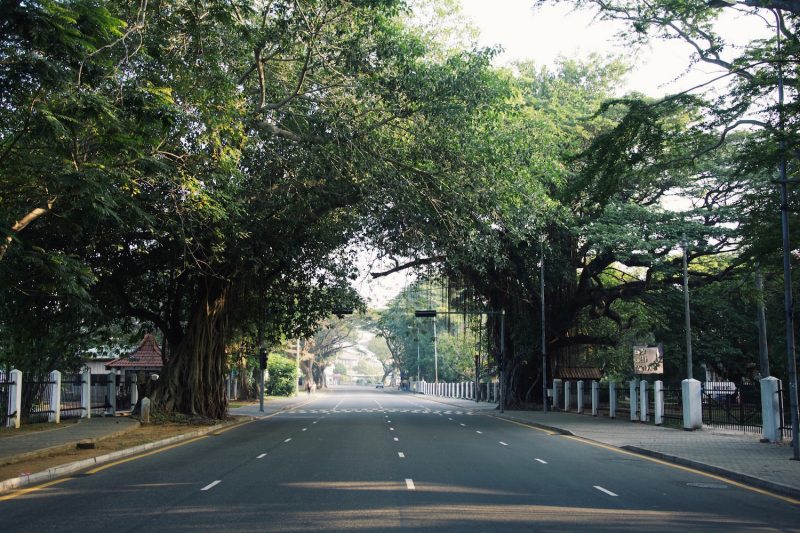
What’s left of Colombo’s trees, though impressive, is only a fraction of what once existed. Image credit: Roar/Minaali Haputantri
A number of factors, natural and otherwise, have contrived to contribute to the demise of Colombo’s oldest trees, among which age takes a central place. Records tell us that a good portion of the specimens were planted as far back as the early 19th century, which means that a lot of trees are nearing the end of their natural lifespan – if they haven’t already.
Yet another natural cause is infestations, such as the mealy bug infestation that claimed the lives of the row of yellow cotton trees that once bordered Flower Road, the same trees after whose bright yellow flowers the street was named.
In both instances, there was room for damage control, as the relevant authorities could have– and still could – take steps to replace the trees that perished. It has been seen, time and time again, however, that when a tree dies in Colombo, it is not always replaced, or, if it is, it is with another species that doesn’t quite provide the same aesthetic value as its predecessor.
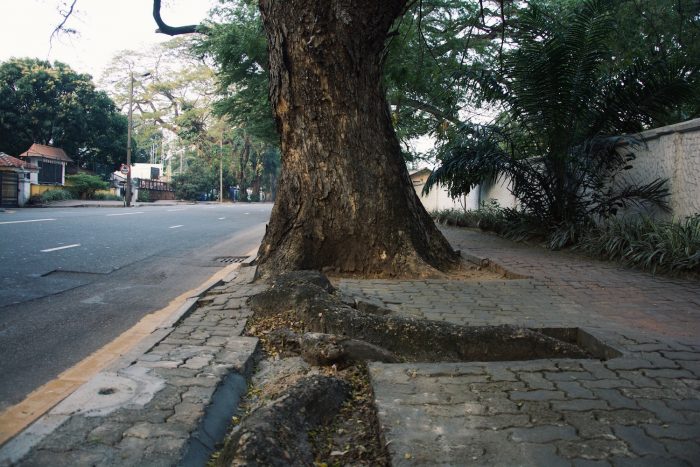
Most of Colombo’s oldest trees have been left to look out for themselves. Image credit: Roar/Minaali Haputantri
Perhaps more destructive than death by natural causes is the intentional removal of trees that has taken place over the years, accumulating in the previous regime’s scheme to “green” the city, which, ironically, resulted in their – quite callously, as Gunawardena points out – cutting down older trees to replace them with trees that lack the same degree of character. A prime example is Independence Avenue, which was once lined with Polyalthia longifolia trees, whose straight, vertical silhouettes provided a one point linear perspective of the Independence Monument. When, under the previous regime, the Polyalthia longifolia were replaced with na trees, no consideration was taken of the shape of the trees, which meant that the unobstructed view of the monument, so well highlighted by earlier landscapers, was lost.
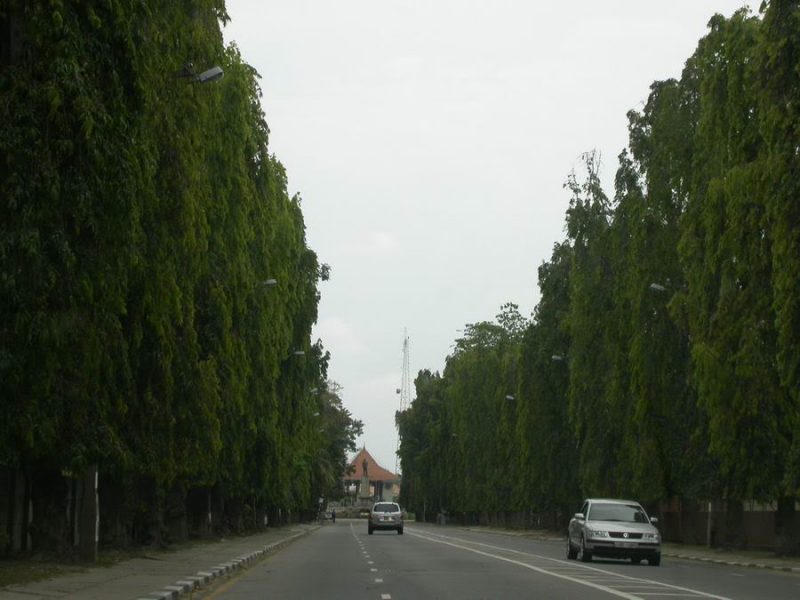
The Polyalthia longifolia that once lined Independence Avenue provided a one point linear perspective of the Independence Monument. Image credit: Photobucket/oshadee_i
In addition to this, many a tree has fallen victim to badly-planned development projects that require trees to be cut down instead of worked around.
This thoughtlessness can be contrasted against the manner in which older trees are protected in other jurisdictions. In the United Kingdom, for example, there are Tree Preservation Procedures in place to register, monitor, and protect certain trees deemed worthy of conservation, whether by virtue of their age, rareness, or cultural significance. Such trees, in addition to being protected against uprooting, cutting, damaging, and excessive pruning, are also tended to by arborists, more commonly known as “tree surgeons”, who assess the threats posed to and by the trees prior to taking the best course of action under the circumstances.
Can Trees Survive Development?
Development is inevitable – necessary, even – but must it come at the cost of the lives of Colombo’s trees?
It is Gunawardena’s belief that, with proper planning, the two can coexist, and the city’s status as ‘The Garden City of the East’ be resurrected, especially in today’s conservation-driven society, where a lot of attention is given to sustainable living and adopting a green lifestyle.
“Colombo can be made colourful year ‘round again,” he insists, “and it does not, necessarily, have to fit in with the vision the British had for the city”.
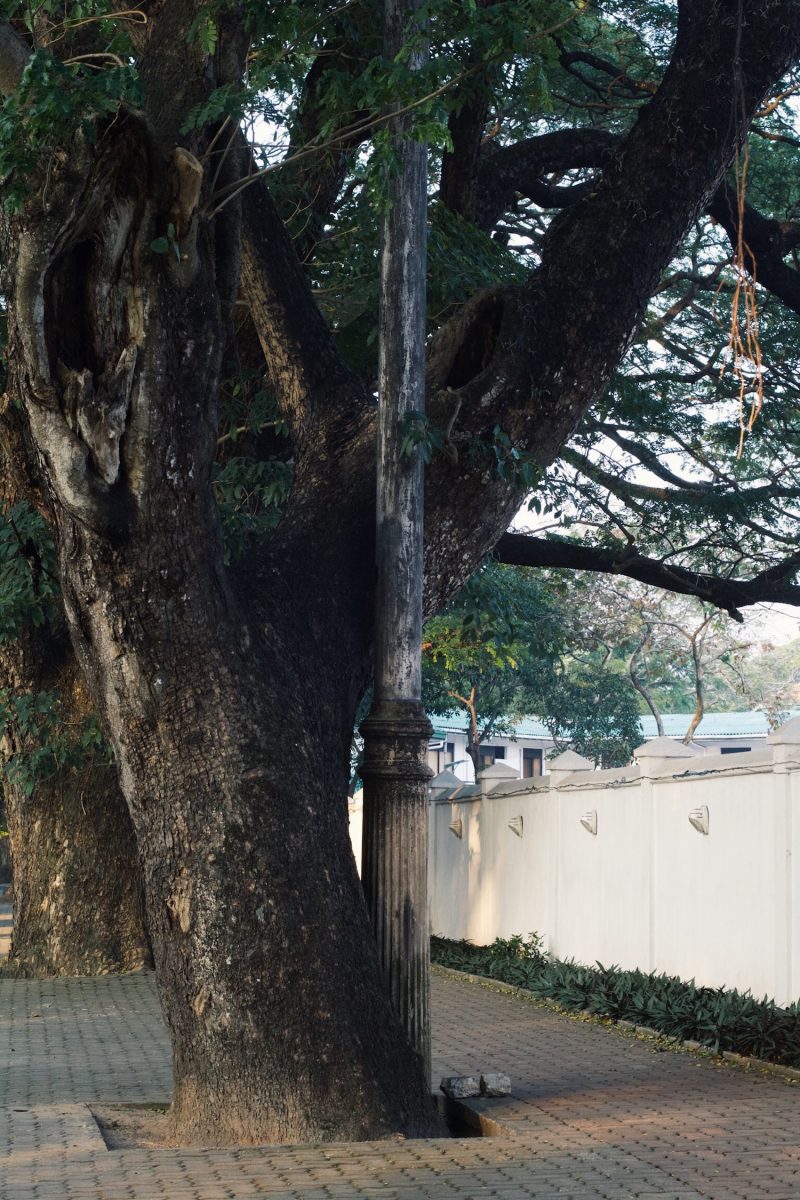
Colombo could, if properly guided, give a whole new meaning to the term “urban jungle”. Image credit: Roar/Minaali Haputantri
Native trees, such as the murutha tree, rukaththana tree, saman tree, and yellow cotton tree, can be substituted for the exotics favoured by the British, and contemporary design incorporated into the age-old art of landscaping.
The emergence of high rises, and wider roads, makes possible the introduction of vertical gardens, alongside more traditional methods such as hanging pots, and shaped hedges. Even owners of personal properties with front-facing lawns could be encouraged to maintain more greenery.
That the garden city model may be achieved in this day and age is evident in the number of cities that have successfully achieved and maintained the model, key among which are Canberra, Hellerau, and Letchworth, the world’s first garden city which has managed to maintain that status to this day.
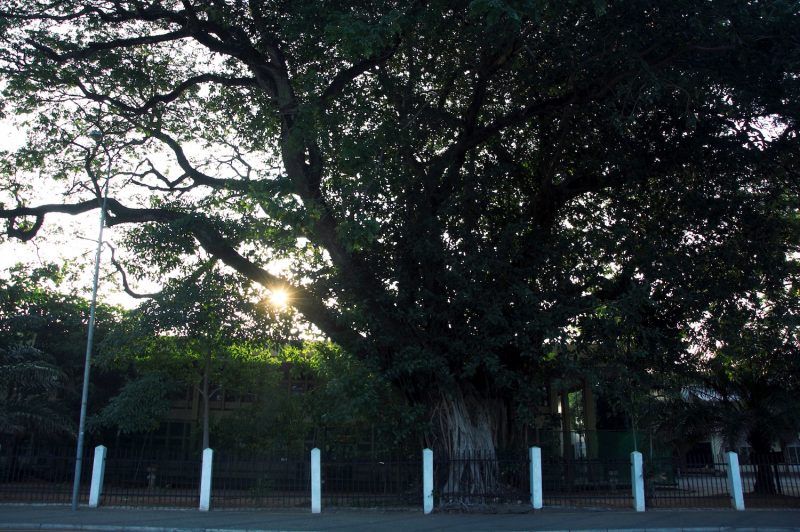
Most of Colombo’s trees from the British era have reached the ends of their natural lifespans, but the ones that remain mark an impressive sight. Image credit: Roar/Minaali Haputantri
There is now no arguing against the fact that Colombo, despite harbouring remnants of a bygone era, is now lagging behind. With a little consideration, and significantly more planning, however, its lost status as a garden city is one that can be regained – if only we try.







